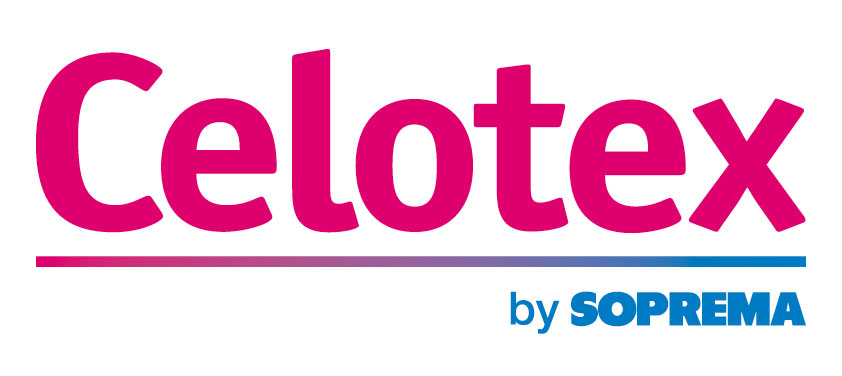What is the standard assessment procedure (SAP) and how does it work?
The Standard Assessment Procedure (SAP) is a method for assessing the energy performance of residential buildings. It applies to new builds or existing buildings undergoing refurbishment or material change of use, including extensions and conversions.
U-value Calculator
Start your U-value calculation
 Mike Vaczi
Mike Vaczi
The Standard Assessment Procedure (SAP) is a method for assessing the energy performance of residential buildings. It applies to new builds or existing buildings undergoing refurbishment or material change of use, including extensions and conversions. It is used in England and Wales to demonstrate compliance with Part L (Conservation of Fuel and Power) of the building regulations. Scotland and Northern Ireland have similar methodologies that have been adapted for their respective national regulations. For non-residential buildings, the Simplified Building Energy Model (SBEM) is used instead.
Understanding what SAP is and how it works can help architects and specifiers make better choices about their designs, such as the kind of insulation to use. With a combination of proven insulation products, such as PIR insulation, as well as professional installation and careful detailing, a home’s energy use can be reduced. This helps the property achieve a better SAP score and reduces the running costs for current and future occupants. In this article, we’ll explore how SAP works, how it influences building design and how PIR insulation can help a home meet or exceed energy performance targets.
What does a SAP score means?
A SAP score provides a clear indication of a home’s energy usage, CO2 emissions & fabric energy efficiency. It reflects how much energy is needed for services such as heating, hot water, lighting and ventilation and how much energy is generated using on-site renewables but excludes unregulated usage from domestic appliances. The assessment uses standardised assumptions for occupancy and usage patterns to ensure consistent comparisons across different dwellings. Mike Vaczi, Technical Director at Celotex, explains: “SAP scores range from 1 to over 100, with a higher score meaning that the building uses less energy and has lower associated carbon emissions.” He says that a score of 100 indicates a net-zero energy home. “That means it’s designed to be energy-efficient, and any energy use is offset by on-site generation,” he adds. In some cases, homes can have a SAP score of more than 100. This means they generate surplus energy that can be exported to the grid. Conversely, lower scores indicate energy inefficiency.
How is a SAP score calculated?
SAP scores are calculated using approved specialist software that processes a wide range of data, including:
- Construction materials, including the type and thickness of insulation
- U-values
- Thermal bridging calculated psi-values
- Air permeability
- Types of Heating, ventilation and air conditioning (HVAC)systems
- Lighting
- On-site renewables
- Waste-water heat recovery
The software uses this information to calculate the home’s regulated energy demand, CO2 emissions and produces an overall SAP rating.
SAP scores are used to produce Building Regulations England Part L (BREL) reports, which are required at both the design stage and after building completion. This means that SAP is also calculated at these two key stages of the project, demonstrating how the home should perform (the design-stage SAP) and how it actually performs (the as-built SAP). The as-built SAP is also used to produce the dwelling’s Energy Performance Certificate (EPC).
For existing dwellings, where complete design and construction details may not be available, a similar but simplified methodology called Reduced Data SAP, RdSAP, is used. RdSAP uses standardised assumptions to generate a reliable estimate of energy performance.
Is SAP the same as an EPC?
While closely related, SAP and EPC (Energy Performance Certificate) ratings serve different purposes. SAP is the calculation method used to assess a home’s energy performance and demonstrate compliance with Part L. EPCs, on the other hand, are certificates that display the home’s energy efficiency rating in a user-friendly format. The EPC is designed for homeowners and occupiers and uses a letter grade (A to G), which is determined by the SAP score and some standard assumptions around occupancy and use patterns.
| EPC Grade | SAP Score |
| A | 92-100 |
| B | 81-91 |
| C | 69-80 |
| D | 55-68 |
| E | 39-54 |
| F | 21-38 |
| G | 1-20 |
Mike notes that EPCs are required whenever a home is built, sold or let. “They provide valuable information such as estimated energy costs, carbon emissions and recommended ways to improve the property’s energy efficiency” he says.
How can PIR insulation improve SAP scores?
The choice of insulation can have a direct impact on a home’s thermal performance and, therefore, its SAP score (or the RdSAP score in existing buildings).
The thermal performance of the building fabric – how much (or how little) heat escapes through the walls, floors and roof – is a key part of the SAP calculation. When more thermally efficient insulation materials are specified, less heat will escape from the home, and therefore, less demand will be placed on the heating systems. This reduces how much energy is needed to heat the home, making it more energy efficient and reducing its associated carbon emissions.
Polyisocyanurate (PIR) insulation is a lightweight, rigid insulation with a closed-cell structure. Celotex PIR insulation products have declared thermal conductivities (λ-values) as low as 0.021 W/m·K (in accordance with BS EN 13165). This enables designers to achieve required U-values with reduced insulation thickness compared to higher conductivity materials, allowing flexibility in wall, roof or floor build-ups while meeting thermal performance targets.
Mike highlights the fact that SAP isn’t prescriptive guidance: “SAP won’t tell you how much insulation or what type to use in a project,” he explains. Instead, it references a ‘notional building’, a benchmark model with set performance values. “The notional building provides a basic indication of the U-values required for compliance, and insulation manufacturers, such as Celotex, to explore different compliant combinations of materials and systems to meet the overall energy performance requirements.” he adds. The ‘notional building’ can be thought of as a bit like a recipe. Shortfalls in some areas can be be balanced across elements, subject to overall compliance with SAP performance targets.
How does thermal bridging impact design decisions for SAP calculations?
While the choice of thermal insulation is an important part of achieving a high SAP calculation, other considerations will also have an impact on a home’s thermal performance.
Thermal bridging, for example, occurs when there are parts of the building envelope with lower thermal resistance. Mike explains that these weak points in a building’s thermal performance are typically found at junctions, such as between walls, floors and roofs, or around window and door openings. “A thermal bridge allows heat to transfer more readily, leading to overall increased heat loss, potentially reduced occupant comfort, and a lower SAP score,” he says. The amount of heat lost due to thermal bridging is known as a Psi value (Ψ-value) and is measured in W/mK.
Psi values and insulation have a close relationship – minimising thermal bridging requires careful planning and detailing and a focus on avoiding gaps in the insulation.
The rigid nature of PIR insulation products can facilitate installation approaches that help maintain continuous insulation at some junctions, depending on the construction design. This continuity supports good junction detailing, which contributes to lower heat losses associated with thermal bridging, and forms part of the overall SAP calculation.
What is the future of SAP calculations?
The SAP methodology has been in use for over 30 years, and during that time, it has evolved in response to changing regulations. The upcoming Future Homes Standard (FHS) is expected to further tighten energy efficiency requirements for homes in England. It is also expected that the Home Energy Model (HEM) will eventually replace SAP.
HEM is a cloud-based tool that will require earlier design input and feature half-hourly energy simulations. Because HEM will introduce substantial changes to how energy efficiency is modelled, SAP 10.3 is currently being developed to smooth the transition and provide reliable compliance calculations while the HEM is finalised.
As regulations and compliance methodologies continue to evolve, accurate product data, technical guidance and declared performance information from manufacturers such as Celotex will support specifiers, designers and assessors in selecting appropriate materials to meet project-specific requirements.
Celotex PIR insulation for improving building fabric energy efficiency
At Celotex, we recognise that achieving high SAP scores requires an integrated approach, combining high-performance insulation with good detailing and documented performance data. Our PIR insulation products have been developed to provide thermal performance and design flexibility, with λ values of 0.022 W/m·K (0.021 W/mK in the case of Thermaclass Cavity Wall 21) and products thicknesses starting from 20mm.
All Celotex products are supported by comprehensive technical information, product literature, and digital specification tools to assist design teams in developing compliant build-ups. Our technical team can provide performance data, construction details, and product guidance to support the design and specification process.
For more information, contact a member of our insulation team to discuss your project requirements.
